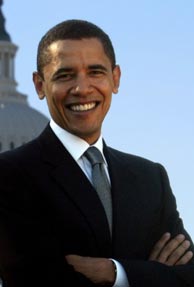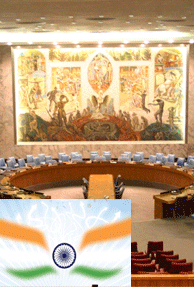Confident of getting another job, Indian employees are more prone to switch employers compared to others in the world, says a global work monitor survey. Amongst the 25 countries surveyed in the Ma Foi Workmonitor survey, India has the highest index of 141, meaning that the maximum employee churn across the globe will be in India, which is followed by China and Mexico. 
The mobility index is based on employees responses to two questions about their intent to change jobs. The first question was about changing the current employer for a comparable job in the next six months. The second question was about changing the current employer for a different job/profession in the next six months. The Ma Foi Randstad Workmonitor is a quarterly review of "mental mobility status" of employees, their readiness to change jobs. The survey was conducted amongst workers in countries in Europe, Asia Pacific and the Americas. The survey also found that Indian employees developed better during the economic crisis by working differently, revealing their innovative streak. The economic crisis was a developmental opportunity to most Indians, which is much higher than what the Chinese said with a score of 64 percent. However, more employees in China went through a structured training programme through their employer during the past year (71 percent) compared to those in India (61 percent).This finding suggests that Indian employees used the downturn better than their Chinese counterparts to explore innovative methods for accomplishing their jobs and hence growing professionally. Eight out of 10 Indian employees surveyed said they would move to another organisation that promises faster and better development.According to K. Pandia Rajan, Chief Executive, Ma Foi Randstad (India and Sri Lanka), the survey, though shows an increase in the mobility and a focus on promotion in the workforce, brings out the fact that employees would be satisfied with organisations that are better equipped to handle their developmental plans. Java,Android,Flex,Mobile,Java ME, Web Services Tips
Wednesday, October 13, 2010
Tuesday, October 12, 2010
India ranks 112 in the gender equality index
To rate the degree of parochialism of a society, the knowledge about the status of women in that society is the most essential criterion. According to a study conducted by World Economic Forum (WEF), which said women could play a key role in rescuing the world out of economic crisis, it has been revealed that India ranks at 112th position when it comes to gender equality, reports Sajid Wahid of Allvoices. 
The Nordic countries of Europe remain global leaders in the campaign to close the gender equality gap. As per the WEF study, Iceland, Norway and Finland topped the gender equality gap while Pakistan, Chad and Yemen trailed in the 134-nation rankings. Phillipines (Asia) and Lesotho (Africa) were ranked among the world top 10. The U.S. now ranks at the 19th position in this chart while France slipped to the 46 position due to it are under performance in women's political empowerment. The Philippines is the only country in Asia this year to have closed the gender gap on both education and health, and is among only eight countries in the world to have done so. After U.S. fine tuned its education patterns with women surpassing men in higher education, the country has entered the index top 20 for the first time. WEF feels that the on lower scores on labour force participation, perceived wage equality and the lower number of reported births of girls made China fall at the 61st position.
Google to push Android in India and China
Google is planning to increase its revenue from its applications including its Android operating system.And also setting its sights on the masses in developing countries like India, which has 670 million cellphone subscribers and has been adding about 18 million a month recently. Now Google will become a significant player in India's wireless industry as several Indian handset makers release low-cost devices that include Android operating system in coming months. Most of the initial Google-powered phones in India from global handset makers such as Motorola and HTC cost upward of $400 a high price for a market where 42 percent of the population of 1.2 billion people earns less than $1.25 a day. To target India's vast middle class, Google is banking largely on a crop of inexperienced Indian smartphone manufacturers including Micromax Informatics, Spice Mobility and Olive Telecom to make Android phones in the $150 range, and eventually the sub-$100 level. Android devices also work best on wireless networks capable of "3G" speeds. Indian carriers are just now in the process of upgrading to that level. According to the company's calculations the arrival of cheaper mobile phones on the market will result in more services being delivered to the final customers free of charge which will increase sales.
By this way Google will be able to make more money from Android supported phones. Plans are also being made by Google to introduce more applications to its gadgets. From the company said that the demand for the Android has ben increasing recently but at a slow rate.
By this way Google will be able to make more money from Android supported phones. Plans are also being made by Google to introduce more applications to its gadgets. From the company said that the demand for the Android has ben increasing recently but at a slow rate.
'I' in India is no more 'Immitation', it's 'Innovation'
For centuries the Indian mindset has been about following the West. Be it a new technology, literature, art, theater, culture or movies. The 'I' in India meant Imitation. India had the me-too mindset and would imitate every aspect of the west. China and Japan were the two other countries who aped America for its technology reports Sufia Tippu of EE Times. 
India has realized that just imitating west cannot bring out the real innovations from Indian minds. Now 'I' in India stands for Innovation. Innovations in India are not a new phenomenon and, it only lacks due recognition also we need to keep in mind that India's infrastructure began to grow only three decades ago while other countries were already nurtured with the supporting ecosystem. IT establishments are emerging with creative and potentially challenging ideas. Narayana Murthy, chief mentor and co-founder of Infosys Technologies said "tremendous confidence in the country among the younger generation. A lot of them are willing to take risk; they have understood the power of entrepreneurship and wealth creation." When IT giants like Infosys , Wipro and Tata consultancy services zeroed on software business, several hundred startups followed in their footsteps, but only a few have stood out from the pack in terms of patented innovations. India's best chances to make its mark on innovation may be in cleantech and other disruptive technologies that can improve the quality of life for the world's poor while enriching their inventors and investors.One such invention along that vein, a low-cost, durable, prosthesis known as the Jaipur foot, has restored function to amputees the world over and is probably the best-known Indian innovation to have found a global market. Mitti Cool, the so-called village fridge. Invented by a potter, Mitti Cool is made from special clay (mitti) and uses evaporation to cool three or more storage chambers for water, fruits and vegetables. A micro-windmill-based mobile charger that uses wind power to charge phones and laptops. Modified lanterns that produce light equal to a 100-watt bulb but run on kerosene, diesel or ethanol. The lamp has a wick coated with high-temperature materials, such as silica; a self-cleaning nozzle; and a special glass that reduces the chances of explosion. These innovations show that India is a talent hub. Maybe these innovations did not grab the global market but it sure did fix the common place problems and also got the attention of the Indian market.
Monday, October 11, 2010
Obama's team confident about made-in-India software
Despite the protectionist policies, when it comes to the government websites, Obama and his team rely on made-in-India software like FusionCharts, for data visualization. Like FusionCharts, a number of startups such as, Zoho, salaree.com, tringme, deskaway and kayako are making waves in the U.S., reports Padmini Copparapu from The Economic Times. 
without moving out of their cubicles in India, these startups are making waves in the world market. Some of these are not even based out of traditional tech hubs like Bangalore and Pune, but are catering to global biggies from their small-town centres in Jalandar and Noida. Nasscom has hailed these startups as the third wave of India's IT revolution. According to Nasscom estimates, there are over 650 such start-ups in India involved in product development, of which nearly 100 have come to the scene in just the past three years. Nasscom Chief Som Mittal has pegged the young tech product development industry in India at $12 billion by 2015. Unlike the Silicon Valley "me-toos" of the past, this new breed of tech companies are building products that are lean, indigenous and world-class, say experts. "A lot of our talent is wasted in the services sector. Product development, especially on the internet is the future; it is location agnostic and will bring us recognition, credibility and unlimited non-linear growth," says Pallav Nadhani, who co-founded FusionCharts in 2002 as a 17-year-old. According to Sharad Sharma, Chair of Nasscom's product forum, after IT implementation services and BPOs, Software as a Service (SaaS) is the next big thing to help the Indian IT industry. Under SaaS, like in cloud computing, the software is deployed over the internet, hosted, owned and managed by a remote service provider, thereby effectively saving the end consumer costs of running the software and also making it easily accessible. "It has opened a whole new world for us. Geography, platform, infrastructure are irrelevant as long as you make a lean and world class product, which these startups are doing. In fact, we are setting some first-time examples in the world," added Sharma. Another example is Chennai start-up Zoho Corp, whose applications are rated on a par with that of Google and Microsoft and is poised to upend market leader salesforce.com in CRM solutions. Even though Zoho has offices across the world, it operates with a 1500-strong team out of Chennai. India to get UN Security Council seat
India is all set to get a seat on the Security Council as a non-permanent member after a gap of 19 years through the elections to be held tomorrow in the United Nations General Assembly.
India is expecting an easy win since Kazakhstan pulled out from the race earlier this year and there is no other challenger from the region. 
While the Asian, African and Latin American seats are going uncontested with only one candidate each, the two seats for Western Europe and others Group are being fought for by Canada, Germany and Portugal.India is expecting an easy win since Kazakhstan pulled out from the race earlier this year and there is no other challenger from the region.
South Africa is a shoo-in for the African seat, which leads to a configuration of three emerging economies -- India, Brazil and South Africa - being on the Council at the same time.In the run-up to the elections, Indian envoy to the UN Hardeep Singh Puri pointed out that BRIC (Brazil, Russia, India and China) nations will occupy places in the Security Council in the coming year, and could present a united front on several contentious international issues. "BRIC coordination in the Security Council becomes a fact of life," Puri had said.
Indian diplomats have been canvassing for the spot for the past three years. To win, India needs two-thirds of the General Assembly vote, which adds up to about 128 giving the green light to India. India's last stint on the Security Council was in 1992.
The five new countries will be replacing Austria, Japan, Mexico, Turkey and Uganda. Colombia is expected to come in place of Mexico.
Meanwhile, India is pushing for Security Council reform and hoping that change comes in the next two years while it is already in the Council. If Germany wins the spot, then all four members of the G4 (India, Brazil, Japan and Germany), which want to become permanent members, will be on the Council.
The terms of the elected countries start January 1. At their last meeting in New York in September, foreign ministers of the G4 members decided to push ahead with Security Council reform and seek results at the earliest. Speaking at the annual debate of the General Assembly, External Affairs Minister S M Krishna said that "an overwhelming majority" of nations wanted expansion of both permanent and non-permanent seats.
"It is imperative that we take these negotiations to an early and logical conclusion," he had said.
Security Council reform will be on the agenda when U.S. President Barack Obama visits India in November.
Will India have it's own OS?
Defence Research and Development Organisation (DRDO), is working on creating a futuristic computing system, including India's own operating system. Two software engineering centres are being set up for this purpose in Bangalore and New Delhi and 25 scientists at each of these centres are working towards it. "We do not have our own operating system. Today, various bodies, including banks and defence establishments, need security. Having our own operating system will help us prevent hacking of our systems," said V.K. Saraswat, Scientific Adviser to the Defence Minister and DRDO Director-General. 
Indian Institute of Science, Indian Institute of Technology Madras and the Centre for Development of Telematics, besides universities and industries are in touch for the fulfillment of the project. Citing security reasons, he refused to provide details of organisations involved in the project. The new operating system would also have commercial use. Saraswat also said that it was fairly a costly affair, without elaborating on the timeframe. "There are many gaps in our software areas; particularly we don't have our own operating system," saidSaraswat, also Director General of DRDO and Secretary, Defence R & D. India currently uses operating systems developed by western countries.In today's world where you have tremendous requirements of security on whatever you do, economy, banking or defence, it's essential that you need to have an operating system," he said. Referring to reports of cyber attacks in recent times and "susceptibility" of internet, he noted instances of "data taken away by adversaries". We have to protect our data and the only way to protect it is to have a home-grown system, the complete architecture source code is with you and then nobody knows what's that. Saraswat also said the DRDO has put in place a "complete framework" on the proposed commercial arm, which is currently in the process of securing necessary government approvals and is expected to be operational next year. This arm would customize and provide to the civil population the spin-offs of defence technologies through select industry partners, which would be production agencies.
Subscribe to:
Posts (Atom)